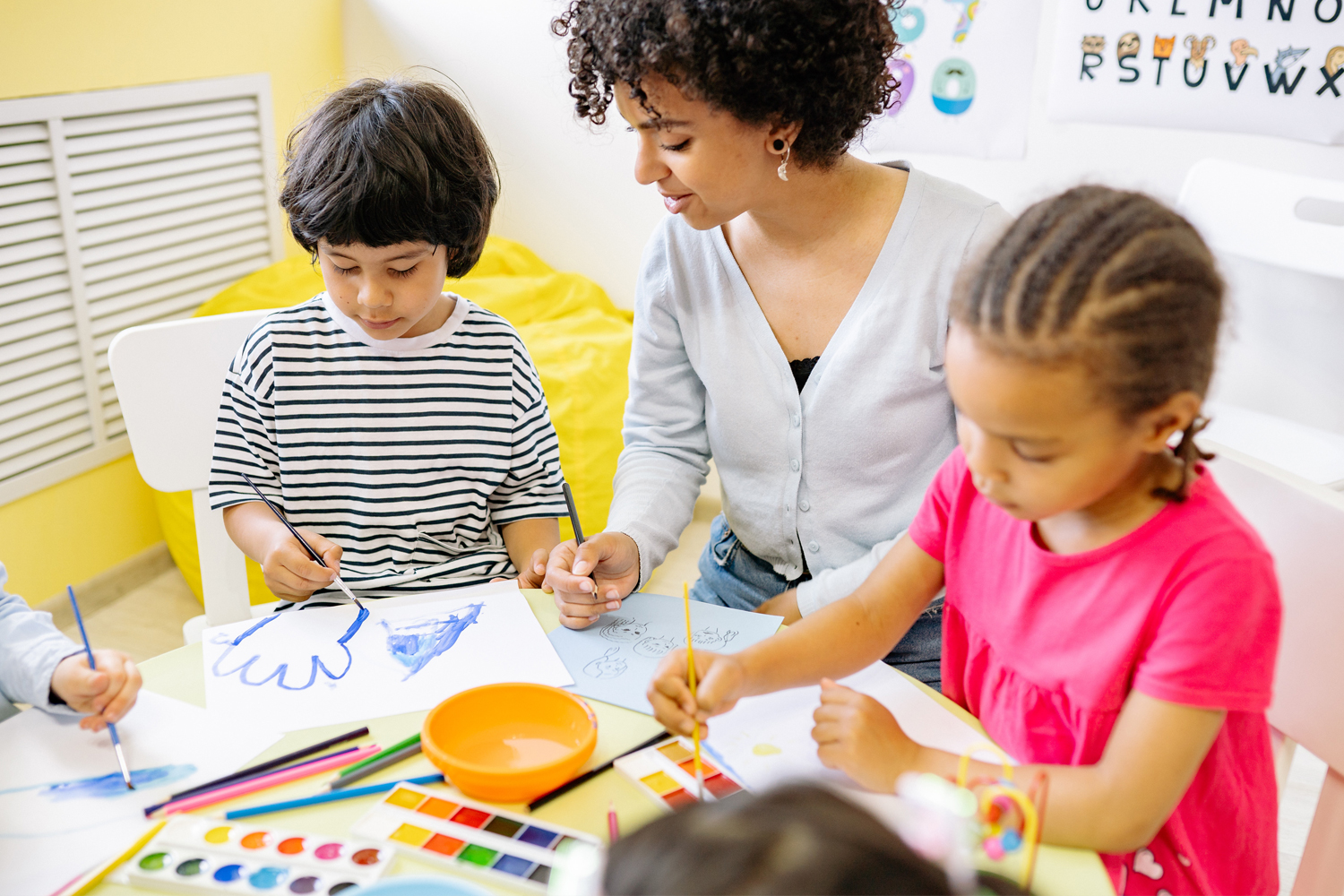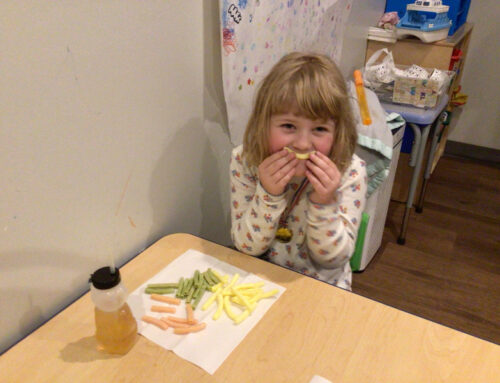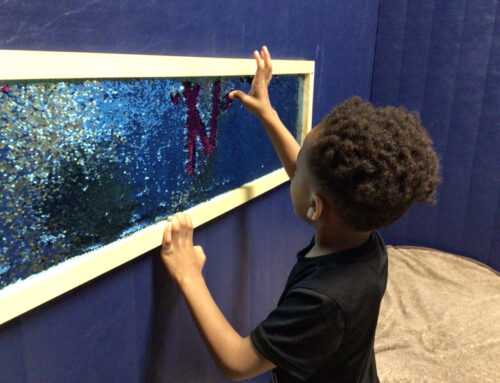Hello and welcome back! In Part 1 of our series, we explored the five traditional senses and how to discuss them with your neurodiverse child. Now, we’re ready to uncover the “hidden” senses fundamental for movement, self-regulation, and feeling comfortable in one’s own body.
This article focuses on the 6th sense, the vestibular system (balance), and the 7th sense, proprioception (body position). While these senses aren’t as well known as vision or hearing, they quietly shape every part of our lives. This is especially true for neurodiverse children, who may experience them in heightened or muted ways.
If your child is constantly in motion—spinning, crashing, or jumping—or seems clumsy and uncoordinated, it may be linked to how they process vestibular and proprioceptive input.
Understanding these systems isn’t just scientifically fascinating; it’s the key to giving your child the support and confidence they need to navigate the world. By learning how to explain them in simple terms and incorporating fun activities into your routine, you can help your child feel more grounded, coordinated, and secure.
Let’s take a close look at these two remarkable senses, how they work, why they matter, and what you can do at home.
How We Discovered Our Hidden Senses
For centuries, the traditional five senses defined how we thought about the human experience. But in the 19th and 20th centuries, scientists began observing children whose struggles went beyond sight, sound, taste, touch, and smell. Why did some children spin endlessly on a playground, while others actively avoided even a gentle sway on a swing? Why did some seem blissfully unaware of bumping into furniture, and others melt down at the feeling of a rough tag?
British neurophysiologist Sir Charles Sherrington first coined the term “proprioception” in 1906, after studying how animals sense their own movement and posture. Later, occupational therapist Dr. A. Jean Ayres pioneered sensory integration theory and showed these systems were especially critical for children with autism, ADHD, and other forms of neurodiversity.
The famous “Little Albert” experiments and observations of children with developmental differences helped broaden scientific curiosity—and compassion—for sensory differences. As researchers followed children through play therapy and classroom interventions, it became clear: some kids weren’t “being difficult;” their world genuinely felt chaotic or unstimulating based on how their brains sorted sensory input.
Today, pediatric occupational therapists rely on this legacy. They design sensory diets (structured plans of sensory activities) for children who crave or shy away from certain inputs, always respecting each child’s unique wiring.
Modern neuroscience has confirmed: the vestibular and proprioceptive senses are the silent partners in everything from learning to hold a pencil, to sitting focused in class, to feeling safe on a bicycle. When these systems are out of balance, everyday tasks can feel overwhelming—and understanding leads to empowerment.
What Is the Vestibular System?
The vestibular system is your body’s finely tuned balance center. Sitting deep within the inner ear (specifically, the labyrinth and semicircular canals), it gives the brain constant updates about where we are in space—whether we’re standing still, lying down, twirling, or being gently rocked.
Imagine your child walking across a log, spinning in a desk chair, or simply tilting their head to ponder a bird on a branch. Their vestibular system is working behind the scenes to keep them upright, stabilize their gaze, and alert their muscles to tiny changes in balance.
How the Vestibular System Works
- Inner Ear Canals: Three semicircular canals detect rotational movements. Picture them like levels on a carpenter’s tool—filled with fluid, so every movement triggers nerve signals.
- Otolith Organs: These “gravity detectors” sense linear acceleration (like riding in a car) and your position relative to gravity (lying down vs. standing up).
- Brain Integration: Information travels quickly to the brainstem and cerebellum, which coordinate posture, eye movements, and muscle tone.
This intricate feedback is why children can learn to ride a bike, balance on one leg, or jump rope after lots of trial and error—their vestibular system is mapping every sway and change in direction, recording it for next time.

How Vestibular Processing Influences Daily Life
Our balance sense isn’t just for physical feats—it guides reading skills (tracking left-to-right with steady eyes), listening (noticing shifts in direction), and feeling calm in the classroom. If a child’s balance sense is under- or over-responsive, these everyday situations can become exhausting:
- Getting dressed: Standing on one foot to put on pants can feel impossible if the ground feels “wobbly” or unreliable.
- Crowded places: A constantly adjusting vestibular system can make supermarkets or gyms uncomfortable, increasing anxiety.
When the System Is Out of Balance
Vestibular input can be too strong (hypersensitive) or too weak (hyposensitive). And because this sense is so closely connected with visual and motor development, differences ripple throughout daily life.
Hypersensitivity (Vestibular Avoidance)
Children may:
- Avoid swings, slides, or climbing equipment.
- Become anxious during car rides or escalator trips.
- Fear having their feet off the ground.
- Get dizzy or nauseous easily—sometimes just from being spun around at home or from the feeling of being picked up.
Hyposensitivity (Vestibular Seeking)
Children may:
- Crave intense movement—spinning, jumping, rocking, bouncing, hanging upside down.
- Have trouble sitting still (“constantly on the go”).
- Seek out risky activities, sometimes leading caregivers to worry about safety.
- Appear fearless or seemingly unbothered by falls.
School and Community Impacts
In school, vestibular-seeking kids are often labeled “fidgety” or unable to follow directions, while vestibular-avoiders may refuse to join PE or have meltdowns about bus rides or field trips. These are not behavioral problems—they are cues that your child’s balance system is giving their brain mixed messages.
Explaining the Vestibular Sense to Your Child
“Inside your ears, you have a special balance helper that tells your brain whether you’re upright, upside down, or moving. Sometimes, this helper works really hard and makes you feel dizzy or nervous. Other times, it needs extra movement to feel just right. That’s why you might like (or dislike) swinging, rolling, or spinning—your balance helper is just being itself!”
With older children, you can link it to real-world examples: “You know how walking on a balance beam can feel exciting or scary? That’s your balance sense figuring things out!” For younger kids, use toys or stuffed animals to show wobbling versus stability.
Tips and Activities
A supportive environment lets your child safely explore—or retreat from—movement, helping them gain confidence and learn self-regulation. Before any activity, always check for comfort and start slowly—kids should feel safe and in control.
For Vestibular Seekers
- Supervised Spinning: Allow chair spinning, but set limits. For example, “Let’s spin five times, pause for a hug, then decide if you want more.”
- Jump Zones: Designate areas for jumping (mini trampoline, crash mat, or big cushions) and try jumping jacks, frog jumps, or “Superman leaps.” You could even tape lines on the floor and set “jumping challenges.”
- Swinging: Try back-and-forth (linear) swinging in a hammock or playground swing; observe what types of motion your child prefers (side-to-side, spinning, gentle or big pushes).
- Dance Parties: Choose songs with clear rhythms and set dance moves that involve spinning, tiptoeing, or galloping.
For Vestibular Avoiders
- Gradual Introduction: Begin with gentle, predictable motions—rocking together in a chair or swaying while holding hands. Let your child lead and only increase speed if they seem interested.
- Countdowns and Predictability: Give clear timeframes and use visual supports: “We’ll rock for 30 seconds, then stop and rest.”
- Feet-on-the-Floor Activities: Build towers, color, solve puzzles, or play with building blocks on a solid surface.
- Peer Modeling: Sometimes, watching a trusted adult or sibling enjoy gentle swinging or balancing can ease anxiety about trying new movement.
Universal Balance Activities
- Balance Beam Adventures: Use painter’s tape on the floor for “walk the line” games—try walking forward, backward, and sideways with arms out like airplane wings.
- Yoga for Kids: Animal poses like flamingo, cat-cow, or dog-stretch build core strength and balance. Turn it into a game: “How long can you freeze like a flamingo?”
- Obstacle Courses: Create easy indoor challenge courses (step over pillows, crawl through tunnels, or balance a beanbag on your head) to keep movement playful and low-pressure.
- Simon Says: Incorporate balance cues—“Simon says stand on one foot,” “Simon says spin in a circle,” etc.
Proprioception: The Body’s Internal GPS
Proprioception (from Latin: “one’s own perception”) is your body’s ability to sense position, movement, and force. It’s what lets you touch your nose with your eyes closed, type on a keyboard without looking, or adjust your grip so you don’t crush a paper cup.
How Does Proprioception Work?
Inside our muscles, tendons, and joints are specialized nerve endings called proprioceptors. These send a constant flow of information to the brain about where each body part is and how it is moving—helping us adjust and adapt effortlessly.
This sense is absolutely crucial for:
- Coordinated movements (walking, running, manipulating small objects)
- Understanding personal space and boundaries
- Regulating force for tasks like writing, cutting, and pouring
- Fine and gross motor skills
- Emotional regulation—children who get “the wiggles” or seem wound-up are often seeking calming proprioceptive input.
When the System Is Out of Sync
Poor Body Awareness
Children may:
- Bump into people or furniture (“bull in a china shop”).
- Trip over their own feet or seem to always be on the wrong side of the room.
- Struggle with tasks like tying shoes or using scissors.
Difficulty with Force
Children may:
- Break pencils from pressing too hard or write so lightly their handwriting is barely visible.
- Slam doors or drop objects unexpectedly.
- Give hugs that feel too tight, or avoid touch altogether.
Seeking Deep Pressure
Many children naturally seek out proprioceptive input because it is calming and organizing to the brain.
Common Behaviors:
- Lying under heavy blankets (even in summer).
- Asking for tight hugs (“squeezes”).
- Crashing into couch cushions, stacking sofa pillows into piles and diving onto them.

Why Deep Pressure Helps:
Deep pressure provides strong, even input that helps “reset” the body’s sense of itself. Lots of research, including studies in occupational therapy, shows that activities giving joint and muscle feedback can improve focus, reduce anxiety, and help children manage big emotions.
Classroom and Playground Manifestations
A child with proprioceptive challenges may rush through schoolwork (seemingly clumsy handwriting), fatigue quickly during sports, or play rough, not noticing they’re overwhelming classmates. Teachers often see these children fidget with pens, squish clay, or take extra bathroom or “movement” breaks.
Explaining Proprioception to Your Child
“Your body has its own secret map! Your muscles and joints send messages to your brain to tell it exactly where your arms, legs, and head are—even when your eyes are closed. Sometimes your map needs extra reminders, like hugs or squeezing something squishy. That’s why you might like (or dislike) big squeezes or pushing with your hands—your body is just trying to find its place in the world!”
With younger kids, try a fun challenge: “Let’s close our eyes and clap our hands above our heads! That’s your body map at work.” For older children, involve them in tracking when their bodies feel “just right” or “out of place,” helping to build insight for self-advocacy.
Tips and Activities
Heavy Work Activities
- Carrying Groceries or Books: Let your child bring in groceries, tote a small backpack with books, or move laundry baskets.
- Helping Around the House: Have them push the vacuum, sweep floors, or help re-arrange sofa cushions.
- Pushing and Pulling: Wheelbarrow walks, pulling a loaded wagon, or playing tug-of-war with a stretchy band.
- Gardening Projects: Raking leaves, pushing a wheelbarrow, or digging in soil—all give deep, organizing input.
Deep Pressure Techniques
- Weighted Items: Try a weighted blanket or lap pad for reading or relaxing. (Use items recommended by a therapist for safety and proper weight.)
- Bear Hugs: Offer big, firm hugs and let your child guide how long and how tight.
- Therapy Ball Rolls: Gently roll a large exercise ball over your child while they lie on their tummy (never cover the head). This is calming before homework or bedtime.
Squeezing and Manipulating
- Playdough and Therapy Putty: Kneading, rolling, and pulling provide wonderful resistance input.
- Squeeze Toys and Fidgets: Keep a variety at hand for homework or classroom focus.
- Cooking Together: Let your child knead bread dough, snap green beans, or squeeze icing out of a bag.
Sensory Bins and Obstacle Courses
- Texture Bins: Fill bins with dried beans, rice, sand, or fabric scraps; hide small toys for “treasure hunts.”
- Pillow Obstacle Courses: Create a mini adventure—crawl over pillows, tunnel under blankets, leap between “islands” (towels spread on the floor).
- Gym Challenges: If you have space, hang a rope to swing from, install monkey bars, or build a soft crash pad area.
Fine Motor Fun
- Origami or Beading: Folding, stringing, or weaving strengthens hand muscles and builds body awareness.
- Practice with Clothespins: Have your child clip clothespins onto cards or a line as a game.
Integrating Balance and Body Awareness Into Everyday Life
Real growth happens when you weave these activities gently into your daily rituals—with no pressure, and plenty of laughs.
- Morning Stretches: A playful stretching session before school can set a positive tone for the day.
- Movement Breaks: Incorporate “brain breaks” throughout homework—jump, squeeze, or walk in a straight line between tasks.
- Family Walks or Bike Rides: These activities activate both vestibular and proprioceptive senses and provide a chance to explore the world together.
- Bedtime Wind-Down: Experiment with calming strategies such as rocking chairs, joint compressions, or listening to soft music while holding a favorite stuffed animal.
Encouraging Self-Advocacy
Talk openly with your child about their body’s needs. Encourage them to recognize when they need a “sensory snack” (movement, squeezes, or a break) and empower them to ask for help at school or in public. Practice role-playing these requests together!
Safety, Advocacy, and When to Seek Support
Each sensory system has its own quirks, and every child is unique. Some children may need adaptations in classroom seating, breaks for movement, or sensory-friendly gym experiences. Advocating for your child at school—by sharing what helps calm them or keep them focused—empowers teachers to collaborate with you.
If you’re concerned about your child’s ability to manage daily tasks, social settings, or their own body safely, consider reaching out to a pediatric occupational therapist. These professionals can offer evaluations and create personalized sensory diets—structured activity plans—to meet your child’s needs and encourage positive growth.
It’s easy to feel worried if your child struggles with movement, balance, or body awareness—but remember, every child blossoms at their own pace. By letting them know their body is unique and valued, you replace frustration with compassion and possibility. Celebrate small victories: balancing for a few seconds longer, successfully carrying a heavy bag without dropping it, or mastering a yoga pose. These achievements build resilience, self-worth, and a sense of accomplishment.
Confident and Grounded
The vestibular and proprioceptive senses work in harmony to help children feel secure, coordinated, and brave enough to explore their world. When a child is constantly moving or out of sync with their surroundings, they’re often just seeking the input their body needs. By honoring these needs you nurture their self-confidence and self-understanding.
Incorporating playful, intentional activities into your routine provides “sensory nutrition” your child needs to thrive. These moments of connection don’t just build strong brains and bodies—they strengthen your bond as parent and child.
Stay tuned for our final installment, Part 3, where we’ll explore the internal senses that govern everything from hunger to our sense of time. And remember, if you have concerns about your child’s sensory processing, an occupational therapist is an invaluable ally ready to support you and your family on this sensory journey.
You are not alone on this path. With a deeper understanding of the vestibular and proprioceptive systems, you can transform every stumble, every spin, and every squeeze into a step forward for your remarkable child.

Blue Bird Day—the first therapeutic preschool and kindergarten program in the nation—fosters socialization, sensory regulation, and pre-academic learning in children ages 2-7 years. Our compassionate therapists practice a relationship-based and family-centered approach, provide parent training, and collaborate on goals and individualized intensive treatment plans for your child.
We believe in a collaborative and multi-disciplinary team approach to therapy. A team of occupational therapists, speech-language pathologists, dietitians, developmental therapists, behavioral therapists, physical therapists, and therapeutic assistants are created for each child to ensure child and family are fully supported and the best possible results are achieved.
Options for individualized, group and virtual therapy sessions are available as well.
Want to learn more or you have a specific question? Feel free to connect with us here!



